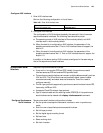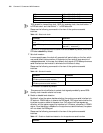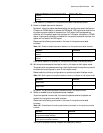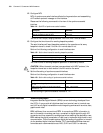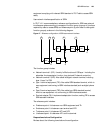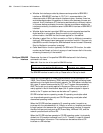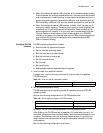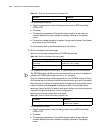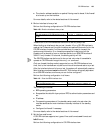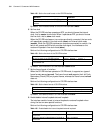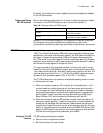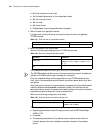
130 CHAPTER 10: CONFIGURING WAN INTERFACE
■ Whether the interface provided by telecom service provider is ISDN BRI U
interface or ISDN BRI S/T interface: In ITU-T I.411 recommendation, the
reference model of ISDN user-network interface is given. However, there is a
worldwide dispute about the position of division point between the user and
network. And U interface or S/T interface is used according to different nations.
In this case, before purchasing the router, the user must ensure whether the
interface provided by the telecom server is ISDN BRI U interface or ISDN BRI S/T
interface.
■ Whether digital service is provided: ISDN can provide integrated services like
digital service or voice service. Since the router is to perform digital
communication, the ISDN line that the user applies for t be realized.
■ Whether to select Point-to-Point connection or Point-to-Multipoint connection
(optional): ISDN supports semi-permanent connection function. If the user only
uses ISDN to connect fixed points, ISDN dedicated line can be used. Otherwise,
Point-to-Multipoint connection is required.
■ Caller Identification function (optional): On ISDN with CID function, the caller
number can be filtered, so that only a group of user lines can dial in this router,
enhancing the security of the network.
Configure ISDN BRI
Interface
Please enter the view of the specified ISDN BRI interface with the following
command in all views.
Table 124 Enter the view of the specified ISDN BRI interface
The ISDN BRI interface is used to dial up. Please refer to Dial-up for detail.
CE1/PRI Interface Along with the emergence of Pulse Code Modulation (PCM) technique in the
1960s, Time Division Multiplexing (TDM) technique is eventually achieving broad
applications in the digital communication systems. The TDM system is divided into
two types: E1 system recommended by ITU-T and T1 system recommended by
ANSI. The former one is widely applied in Europe and China, and the latter is
mainly applied in North America and Japan (the J1 system adopted in Japan is
similar to the T1 system and hence can be taken as T1 system).
CE1/PRI interface has two operating modes: E1 operating mode (also called
non-channelized operating mode) and CE1/PRI operating mode (also called
channelized operating mode).
When the CE1/PRI interface operates in E1 operating mode, it equals to an
interface with the data bandwidth of 2 Mbps, on which no timeslots are divided.
Its logic feature is the same as that of a synchronous serial interface. It supports
the data link layer protocols such as PPP, Frame Relay, LAPB and X.25, and the
network protocols such as IP and IPX.
When the CE1/PRI interface operates in CE1/PRI operating mode, it is physically
divided into 32 timeslots numbered from 0 to 31. Timeslot 0 is used to transmit
the synchronization information. This interface can be used as either a CE1
interface or a PRI interface.
Operation Command
Enter the view of the specified ISDN BRI interface interface bri number




